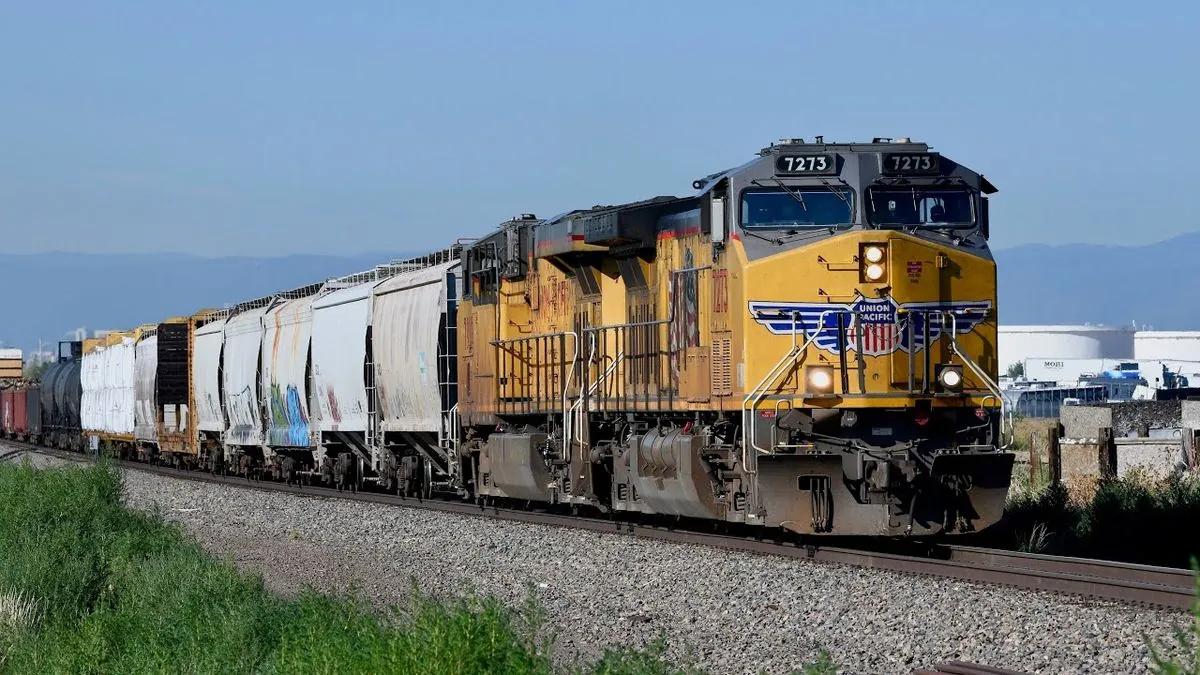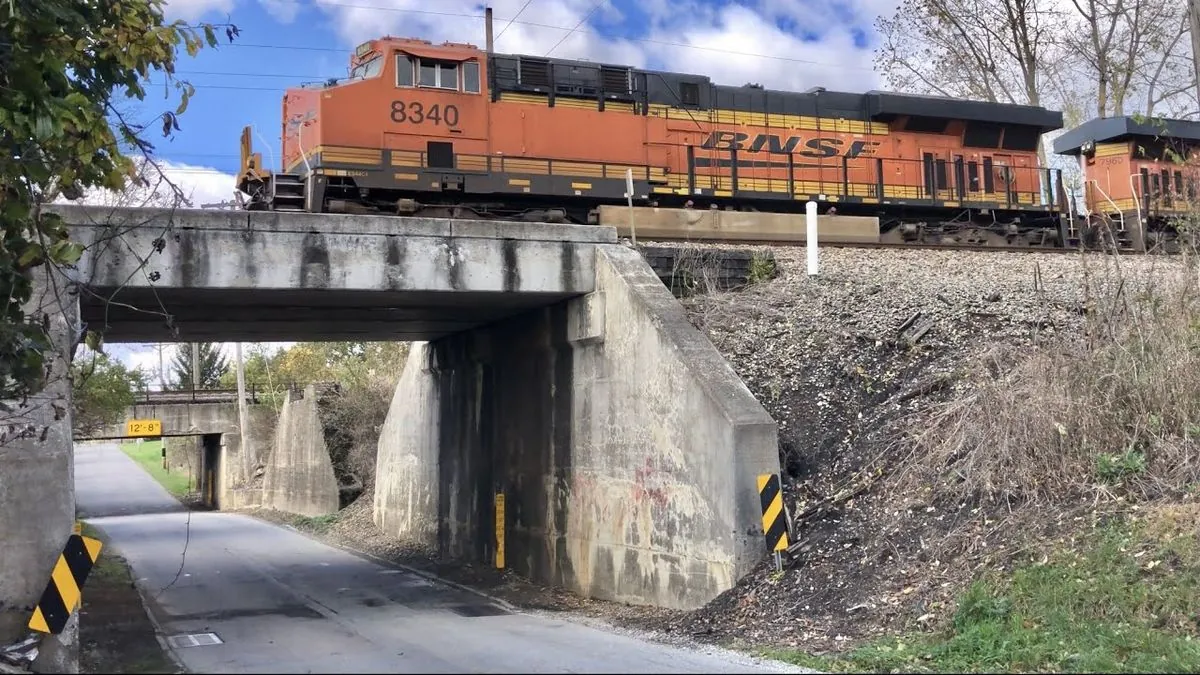U.S. Freight Train Safety Concerns Rise as Lengths Increase
National Academies report urges reassessment of long train risks. Unions highlight safety issues, while industry defends practices. Regulators called to address derailments and community impacts.

The safety of freight trains in the United States has come under scrutiny as their lengths continue to increase. A recent report by the National Academies of Sciences has highlighted the need for a comprehensive reassessment of the risks associated with longer trains, urging regulators, Congress, and the railroad industry to take action.
Peter Swan, a Penn State University professor and one of the report's authors, stated, "Long trains aren't inherently dangerous. But if you don't have adequate planning on how to put the train together, they can be." This sentiment echoes concerns raised by the Federal Railroad Administration last year.
The average length of freight trains has grown significantly, increasing by approximately 25% between 2008 and 2017. By 2021, some trains had reached lengths of nearly 14,000 feet (4,267 meters), equivalent to more than 2.5 miles (4 kilometers). This trend has allowed major freight railroads to reduce costs by employing fewer crews and maintaining fewer locomotives.

However, unions representing train crews have voiced serious concerns about the safety implications of these longer trains. Jared Cassity, the top safety expert at the SMART-TD union, emphasized, "Anybody and everybody that's in rail safety knows that this is a problem. It cannot be overstated."
The challenges of operating long trains include:
1. Difficulty in handling trains across uneven terrain
2. Communication issues due to radio limitations
3. Increased risk of derailments caused by forces between cars
Despite these concerns, the railroad industry maintains that they prioritize safety regardless of train length. Ian Jefferies, president and CEO of the Association of American Railroads, stated that railroads use advanced software to model train forces before assembly.
"Long trains have a greater risk of derailing, have communications issues, and pose a threat to the public due to blocked crossings, among other issues."
The U.S. freight rail network, spanning nearly 140,000 miles of track, is the largest in the world. It plays a crucial role in the country's transportation infrastructure, accounting for about 40% of long-distance freight volume. However, the industry has faced challenges in balancing efficiency with safety concerns.
Derailments remain a persistent issue, with over 1,000 occurring annually in the U.S. A notable incident in East Palestine, Ohio, in February 2023 brought increased attention to rail safety. Although that derailment was attributed to an overheating bearing rather than train length, it highlighted the potential risks associated with long trains carrying hazardous materials.
The National Academies report recommends that Congress ensure the Federal Railroad Administration has the authority to address the dangers of long trains. It also suggests that railroads should carefully plan the composition of trains, particularly those exceeding one or two miles in length.
As the debate continues, it's worth noting that the railroad industry has made significant strides in safety over the years. Railroad crossing accidents have decreased by 80% since 1972, and the implementation of Positive Train Control, mandated by Congress in 2008, has helped prevent train-to-train collisions.
The challenge now lies in finding a balance between operational efficiency and public safety as freight trains continue to grow in length. With the average freight train carrying the equivalent of 280 truckloads and consuming about seven times less fuel than trucks per ton-mile of freight, the importance of rail transportation in the U.S. economy cannot be overstated.
As regulators and industry stakeholders work to address these concerns, the future of freight rail safety in the United States hangs in the balance, with potential implications for communities, workers, and the broader transportation sector.


































